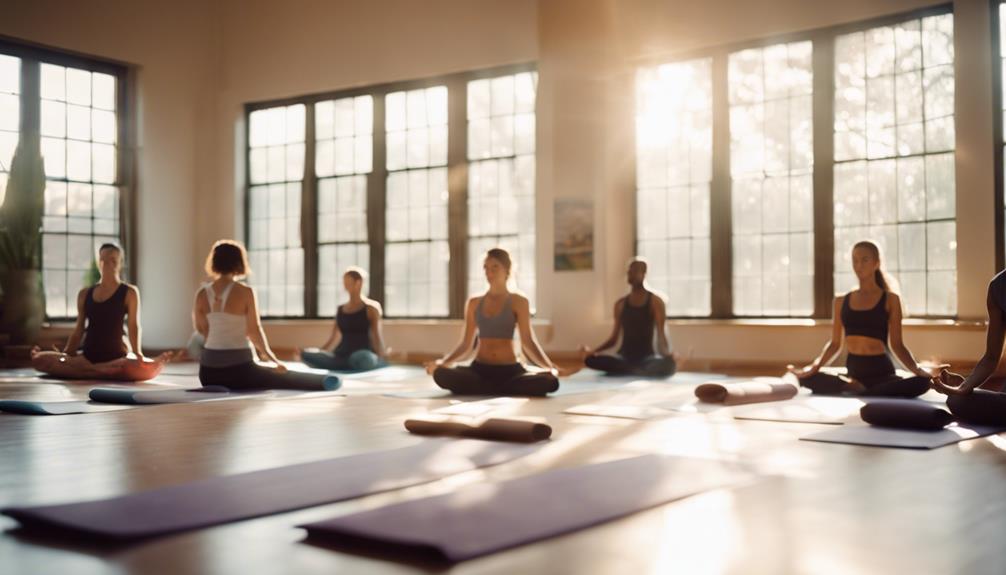Yoga, an ancient practice with roots in India, has grown into a diverse field of physical, mental, and spiritual disciplines. The various schools of yoga have emerged over thousands of years, each contributing unique philosophies, techniques, and approaches to the art of yoga. This article explores the origins, key philosophies, and major schools of yoga practices, helping practitioners and enthusiasts alike to navigate the rich landscape of yoga.
Understanding the Origins of Yoga Schools and Traditions
The origins of yoga date back over 5,000 years, intertwined with the spiritual and cultural fabric of ancient India. Initially, yoga was a meditative practice aimed at fostering a deeper connection between the individual and the universe. The Vedas, ancient texts that form the foundation of Hindu philosophy, introduced early practices that evolved into what we now recognize as yoga. Over time, various schools and traditions emerged, each influenced by regional beliefs, cultural practices, and spiritual insights.Yoga Point Pleasant
As yoga migrated and adapted to different cultures, it absorbed elements from various philosophies, such as Buddhism, Taoism, and Sufism. This cultural exchange enriched the practice, leading to the emergence of numerous styles and schools of yoga, each with its distinct approach to physical, mental, and spiritual development. Today, yoga is practiced globally, catering to a wide array of preferences, lifestyles, and individual goals.
Key Philosophies Behind Major Schools of Yoga Practices
The fundamental philosophies of yoga schools revolve around the concepts of union and balance, emphasizing the connection between the mind, body, and spirit. At its core, yoga seeks to harmonize these elements, fostering a state of well-being and self-awareness. Different schools interpret this union through various lenses, offering distinct methods and practices to achieve personal growth and fulfillment.
For instance, some schools emphasize physical postures (asanas) and breathwork (pranayama) as pivotal components, while others focus more on meditation and self-inquiry. Understanding these philosophies allows practitioners to choose a path that resonates with their values and aspirations, whether it is cultivating strength, flexibility, mindfulness, or spiritual awakening.
Hatha Yoga: The Foundation of Physical Asanas and Breathing
Hatha Yoga is often regarded as the foundational practice of yoga, serving as a gateway for many practitioners. The term "Hatha" translates to "sun" (ha) and "moon" (tha), symbolizing the balance of opposing forces. Hatha Yoga encompasses a variety of physical postures (asanas) and breathing techniques (pranayama), aiming to promote physical health and mental clarity.
In Hatha classes, practitioners typically engage in slower-paced movements, focusing on alignment and form. This approach allows individuals to develop strength, flexibility, and body awareness, making it an excellent starting point for beginners. The emphasis on breath control also cultivates mindfulness, promoting a deeper connection between the mind and body.
Vinyasa Yoga: The Flowing Practice of Movement and Breath
Vinyasa Yoga is characterized by its dynamic and flowing sequences, linking breath with movement in a continuous dance. The word "vinyasa" translates to "arranging something in a special way," highlighting the intentional flow and transition between postures. This style of yoga allows practitioners to experience a sense of rhythm and liberation as they flow from one asana to another.
Classes often feature creative sequences that vary from session to session, making each practice unique and engaging. Vinyasa emphasizes the importance of breath, encouraging practitioners to synchronize their inhalations and exhalations with their movements. This connection fosters a meditative state, allowing individuals to cultivate awareness and presence throughout their practice.
Ashtanga Yoga: Exploring the Eight Limbs of Yoga
Ashtanga Yoga, developed by Sri K. Pattabhi Jois, presents a structured approach to yoga based on the eight limbs outlined in Patanjali’s Yoga Sutras. These limbs encompass ethical guidelines (yamas and niyamas), physical postures (asanas), breath control (pranayama), sensory withdrawal (pratyahara), concentration (dharana), meditation (dhyana), and enlightenment (samadhi). This comprehensive framework serves as a roadmap for personal and spiritual development.
Practitioners of Ashtanga Yoga follow a set sequence of asanas, progressing through the series at their own pace. The practice is physically demanding, promoting strength, flexibility, and discipline. The structured nature of Ashtanga encourages a deep engagement with each limb, allowing individuals to explore their potential both on and off the mat.
Kundalini Yoga: Awakening Energy Through Spiritual Practice
Kundalini Yoga focuses on awakening the dormant energy believed to reside at the base of the spine. This style combines dynamic movements, breath control, chanting, and meditation to stimulate and elevate this energy, often referred to as "Kundalini." The practice aims to enhance self-awareness and spiritual growth, encouraging practitioners to connect with their true nature.
Classes often include a series of kriyas, which are specific sequences of exercises designed to achieve particular outcomes. The emphasis on energy work and spiritual development sets Kundalini Yoga apart from other styles, making it appealing to those seeking a profound transformative experience. The integration of chanting and meditation further enhances the spiritual aspect, promoting inner peace and clarity.
Iyengar Yoga: The Emphasis on Alignment and Precision
Iyengar Yoga, developed by B.K.S. Iyengar, places a strong emphasis on alignment, precision, and the use of props such as blocks, straps, and blankets. This approach allows practitioners to explore the subtleties of each asana, ensuring proper alignment and reducing the risk of injury. Iyengar Yoga is particularly beneficial for individuals with physical limitations or those recovering from injury.
Classes often involve longer holds in postures, enabling practitioners to deepen their understanding of alignment and gain greater body awareness. Through meticulous attention to detail, Iyengar Yoga fosters a sense of stability and balance, helping individuals cultivate strength and flexibility in a safe and supportive environment.
Yin Yoga: The Balance of Passive Stretching and Mindfulness
Yin Yoga is a slower-paced style that focuses on passive stretching and long-held postures, targeting the deep connective tissues, such as ligaments, joints, and fascia. Each pose is typically held for several minutes, allowing practitioners to explore their physical limits while cultivating a sense of mindfulness and presence. The practice encourages deep relaxation and introspection, making it a meditative experience.
Yin Yoga is often complemented by breath awareness, fostering a deeper connection to the body and mind. This approach can be particularly beneficial for individuals seeking to balance the more vigorous aspects of their yoga practice or those looking to cultivate emotional release and stress relief. Through the practice of Yin Yoga, individuals can experience a profound sense of stillness and inner peace.
Restorative Yoga: Healing Through Relaxation and Support
Restorative Yoga is a gentle, nurturing practice designed to promote healing and relaxation through deeply supported postures. Using props for support, practitioners can fully rest in poses for extended periods, allowing the body and mind to release tension and restore balance. This approach is particularly beneficial for those recovering from stress, injury, or fatigue.
Classes often emphasize breath awareness and mindfulness, encouraging practitioners to turn inward and cultivate a sense of serenity. Restorative Yoga provides an opportunity to slow down and reconnect with oneself, making it an invaluable practice for anyone seeking to foster a greater sense of well-being and inner peace.
Choosing the Right Yoga School: Factors to Consider
When selecting a yoga school or style, several factors come into play. First and foremost, individuals should consider their personal goals, whether it’s improving physical fitness, enhancing mindfulness, or exploring spiritual growth. Understanding what resonates with one’s values and preferences is crucial in finding the right practice.
Additionally, practitioners should reflect on their physical abilities, experience level, and any specific health concerns. Different schools offer varying levels of intensity and focus, so it’s essential to choose a style that aligns with one’s needs. Lastly, the instructor’s qualifications, teaching style, and the atmosphere of the studio or community can significantly impact one’s overall experience, making it essential to explore and find a supportive environment.
With a multitude of yoga schools and styles available, practitioners are encouraged to explore the diverse offerings of this ancient practice. Each school provides unique insights and techniques, allowing individuals to tailor their yoga journey to align with their personal goals and philosophies. Whether one seeks physical fitness, mental clarity, or spiritual awakening, the rich tapestry of yoga schools presents a transformative path for all who embark on it.


